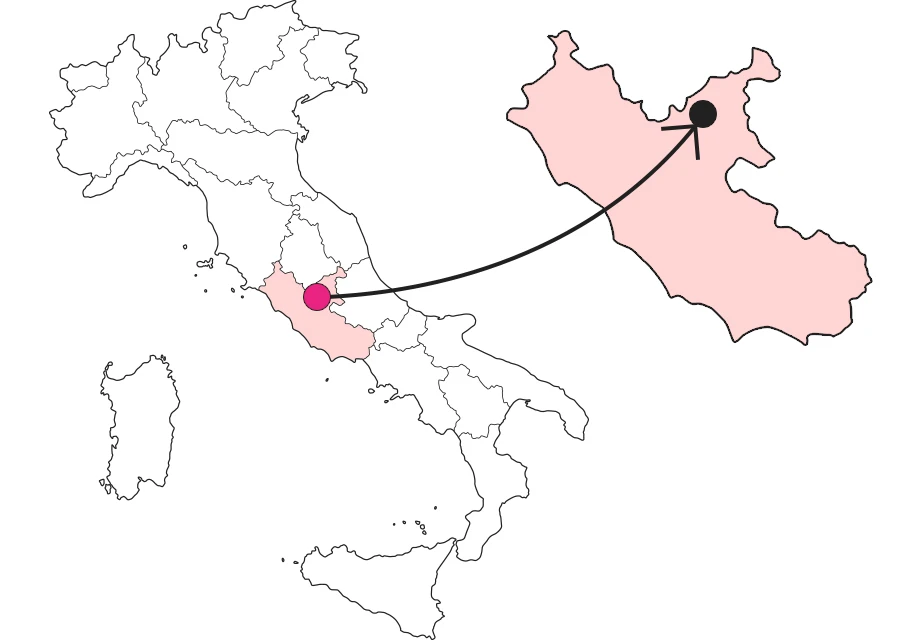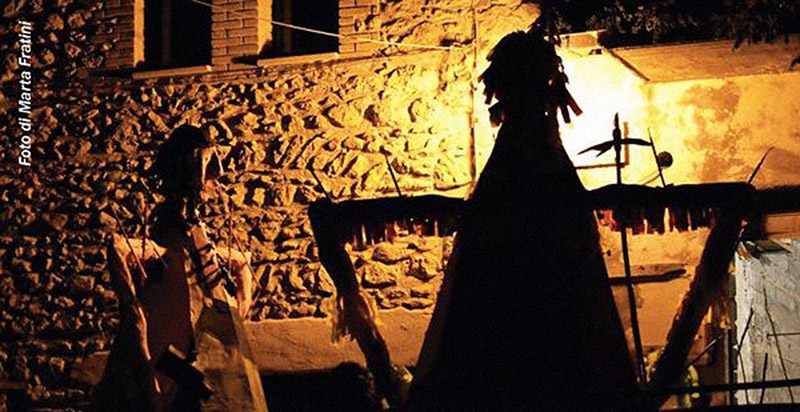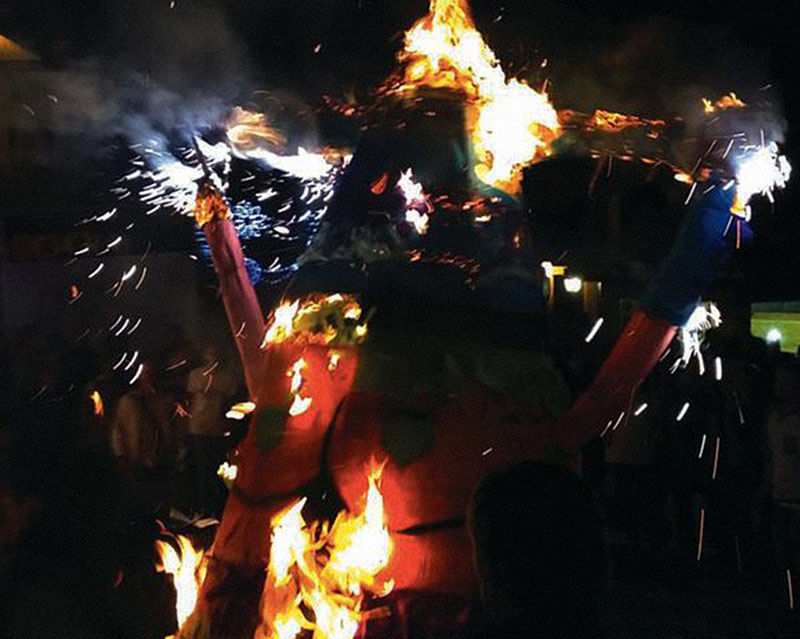SHARRYLAND


Where is

There is a night in Paganico Sabino that is not like any other. It is a hot August night, but the darkness and silence that should mark it are supplanted by the lights and noises of the feast of Mary Most Holy and St. John the Baptist. The whole town is in the square, and even visitors who have come here on purpose. The air one breathes, however, is peculiar: the chatter is not loud and cheerful, but subdued and excited. There is a strange vibration in the air, unmistakable to those who have already experienced it: anticipation.
 The dance begins amid the lights and shadows of midnight.
The dance begins amid the lights and shadows of midnight.The giants, the dance and the fire
Tonight indeed, the Panthasimas are coming, and no one wants to miss their entrance. Here. At last the door to the place where they have been preparing has opened. The first to appear on the square, as always, is the female. A conical structure almost two meters high, made of reeds and paper, decorated in squillant colors. She has two abundant breasts, a symbol of fertility and good omen, and a somewhat grotesque, barely sketched face. She reaches the center of the square acclaimed by the onlookers, but one of the main characters, the male, is still missing. As tall as she is, he greets her with a bow, and it is at this moment that the saltarello resounds , and the dance begins. Following the fast-paced tempo of the music, the Pantasimes brush against each other, leap, tilt, animated by skilled dancers within them. And when the rhythm becomes obsessive and frenzied, the climax of the event arrives: the Pantasimes are set on fire. Undaunted, the brave dancers continue to make the puppets dance, staying inside them as long as possible.
 The dancer does not give up even when the flames begin to consume the Pantasima
The dancer does not give up even when the flames begin to consume the PantasimaAn ancient tradition
What is now a festival is the remnant of an archaic rite, composed of several pagan influences: on the one hand, there is a supernatural element, a giant appearing among the people, like a ghost. And the name "Pantàsima" derives precisely from the Greek word φάντασμα , phantasma that is, "which shows itself." Her features, however, are human: this is because with her dance, in the midst of the people, Pantasima absorbs the evil that might lurk in the community, and cancels it out by drawing it into the purifying fire that consumes her. The people, now freed from the evil one, were ready to begin a new cycle of life. It is no coincidence that by tradition this rite takes place in August: this was the time when the shepherds returned to the village after the transhumance, and were reunited with their families: the end of a cycle, which demanded propitiatory rites for what was about to begin.
 Skilled hands make up the reed structure and cover it with paper
Skilled hands make up the reed structure and cover it with paperFrom the memories of the elders
The Pantasimes of today are most likely not of the same type as those in use before the 1930s. Indeed, the recollections of the elders themselves point to images of smaller and differently shaped puppets , with arms in the shape of a basin and better delineated facial features, perhaps more proper to the art of depicting papier-mâché models. It was an opportunity to unleash inventiveness on grotesque human figures, sometimes even taking some of the townspeople as models. Even the construction procedure was slightly different at that time: it took place in total secrecy, well hidden by the walls of the building chosen as the operational headquarters. They would be seen by people only at their actual appearance in the square, like real ghosts. Certainly the community knew what was being prepared behind those walls, but the surprise at seeing them only at the last moment must have been immense, amplified by the anticipation and the multitude gathered in admiration.
Enter the Map of Italy's Undiscovered Wonders and find treasures where you least expect it... Inspire, Recommend, Share...
Contact
Collections
The Map thanks:
Enter the Map of Italy's Undiscovered Wonders and find treasures where you least expect it... Inspire, Recommend, Share...
Where is

Contact
Collections


